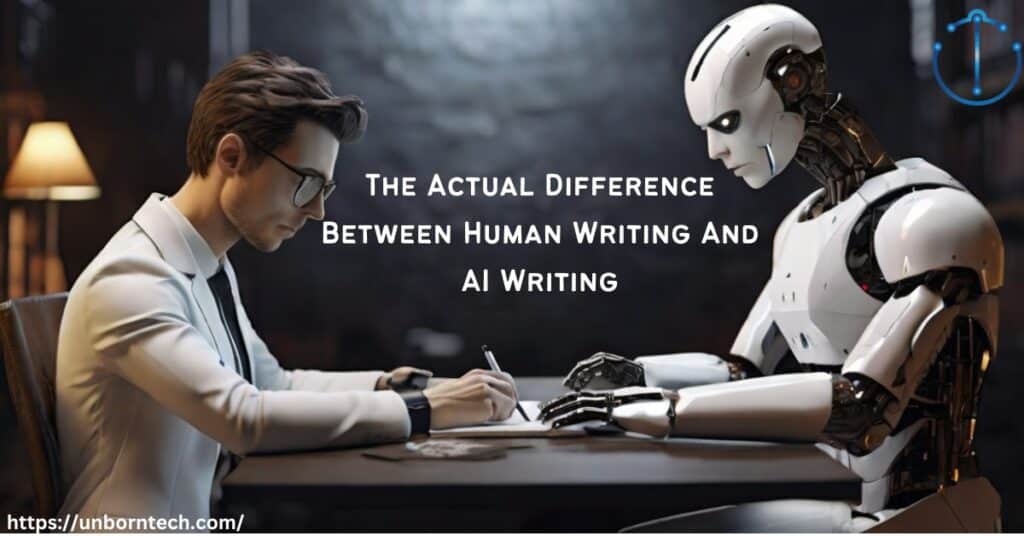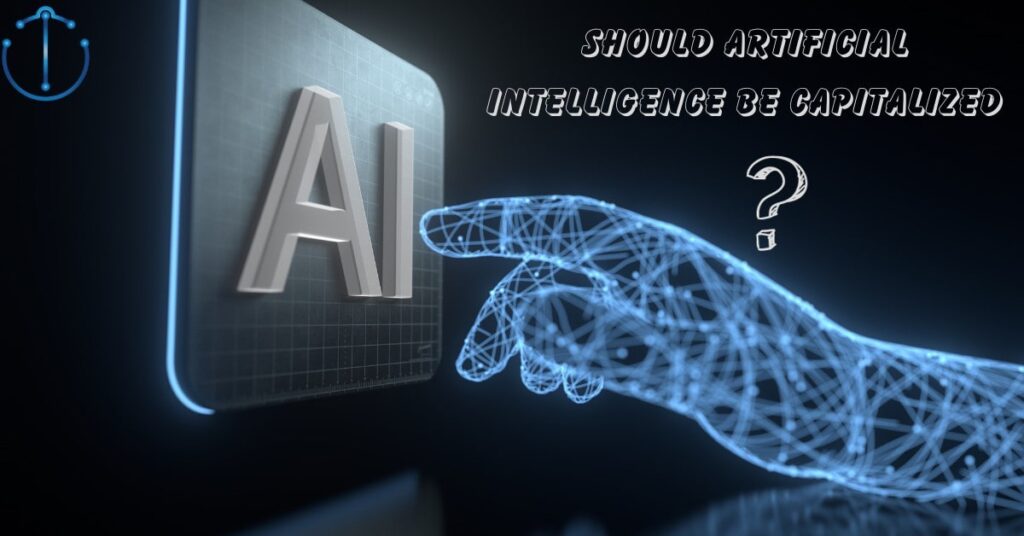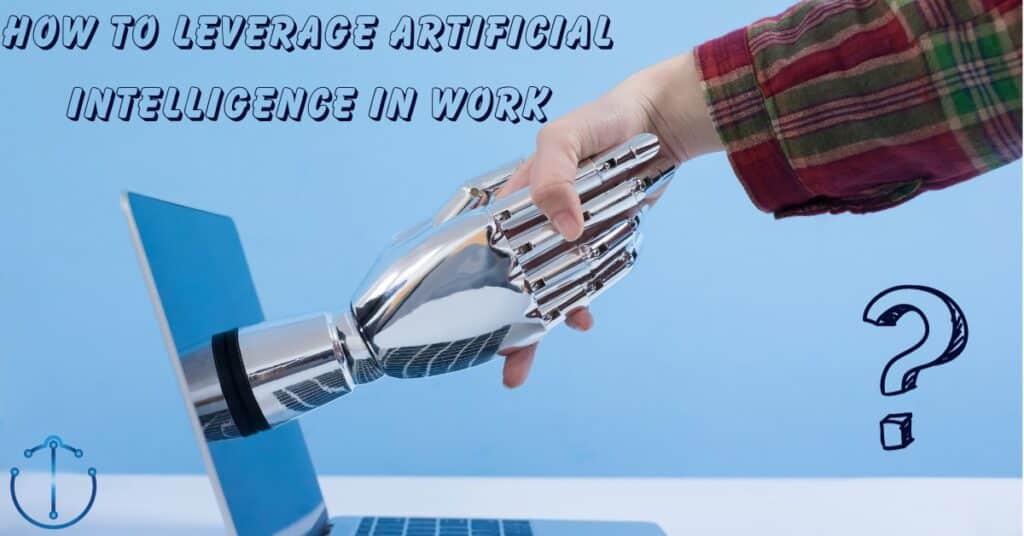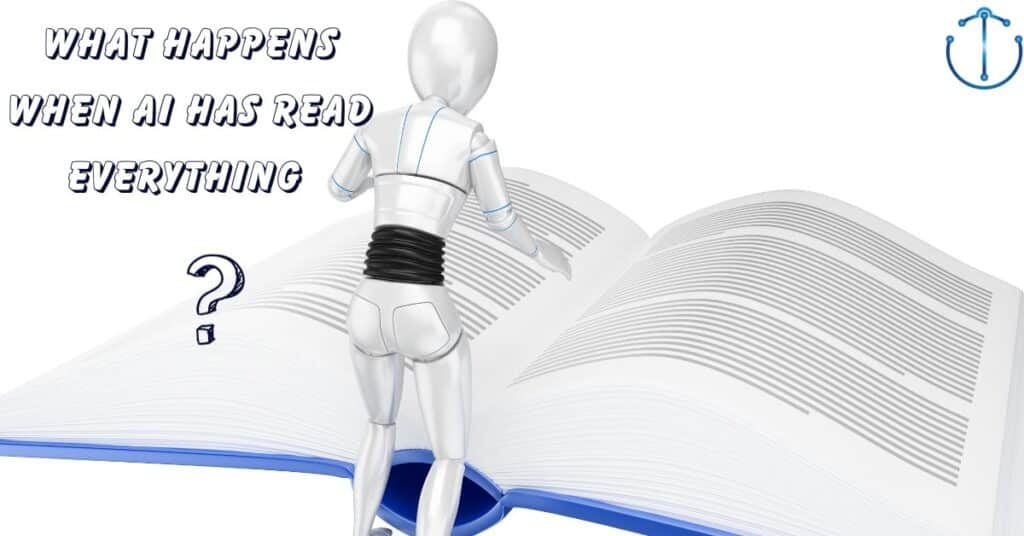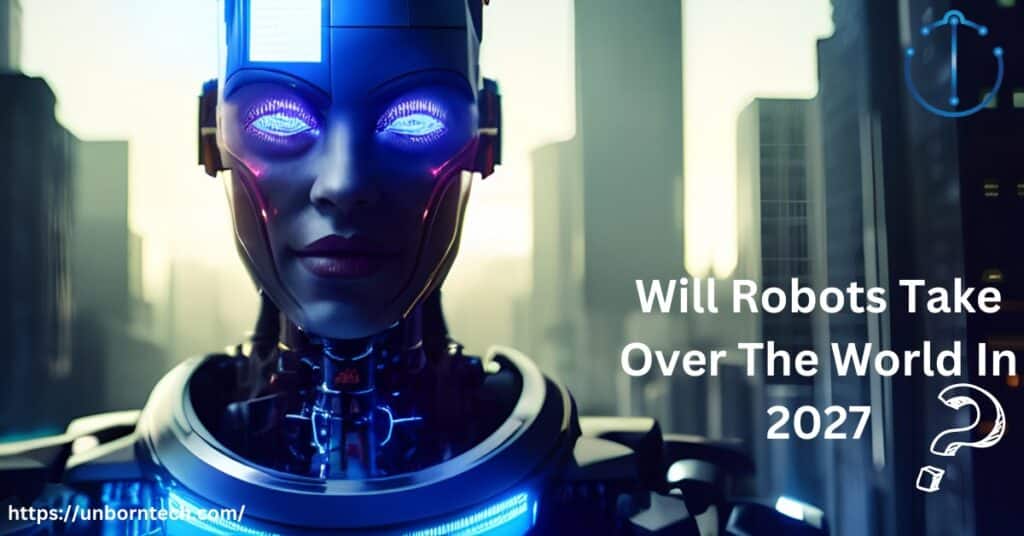Ever since ChatGPT, Gemini, and many other AI writing models have been launched into the digital landscape, the content writing world has changed forever.
Bloggers, copywriters, technical writers – all of them are leveraging AI as their writing assistant, and utilizing these marvelous tools’ capabilities to enhance their productivity and efficiency.
Then came the issue of AI plagiarism. Whether the written piece of content is the work of a capable content writer or he/she just avoided the hard work of researching, writing, and proofreading, and put all their workload on the shoulders of AI.
This concern led to the arrival of AI-plagiarism detection tools like Originality AI, Copyleaks, Turnitin, and many others into the picture. These tools help business owners, educators, digital marketers, and anyone who would like to know if the content is written by a real human or if the lazy content writer just scrapped it entirely out from ChatGPT.
But here comes the million-dollar question;
What is the actual Difference Between Human Writing And AI Writing?
Do you wonder how these AI plagiarism detection tools know if the content is written by a human or an AI writing tool?
Is it the data that it detects, the emotion in the language, the mechanical tone used by many AI tools, or is it something entirely else?
Let’s find out folks!
Table of Contents
Misconceptions on the Internet
Before we disclose our exclusive findings, let’s see some of the misconceptions about the difference between human writing and AI writing on the internet.
This would help you clear out all the fallacies in your mind if you have any.
1. Data is the Culprit
As we all know Large Language Models are being trained on datasets, e.g. ChatGPT was trained on roughly 570GB – 45TB of datasets. From that, many people have assumed that it is the “DATA” that distinguishes AI written content from human written content.
But in reality, it has nothing to do with data. You can input a recent event or the latest news into ChatGPT and the outcome would still be flagged as “AI-written” content by all the popular AI-detection tools.
You can try this by giving ChatGPT a fresh news article written by a human and giving the command, “Rewrite this in a better way” or “Paraphrase this”, and then check the outcome in any of the popular AI-detection tools. The outcome would surely be flagged as “AI-written”.
2. AI lacks Creativity and Originality
The second major mistake people make is the assumption that AI is uncreative and cannot write original content.
Human creativity is indeed superior to AI (at least for now), but assuming that any creative or innovative piece of content is the work of a human is ludicrous. Advanced AI models are extremely creative and can write original content based on the prompt they get from users.
For example, take a look at this imaginary creative story ChatGPT 3.5 just made.

In summary, Large Language Models like ChatGPT or Gemini are as creative as the user giving them instructions.
3. AI Writing Lack Emotions
You must have heard this a thousand times “AI writing lacks emotions”. The statement is indeed true to some extent. But assuming that AI writing is completely devoid of any emotion or sentiment is going too far in our arrogance.
For example, let’s tweak our little story of Tom & Jerry to see what ChatGPT has to offer.
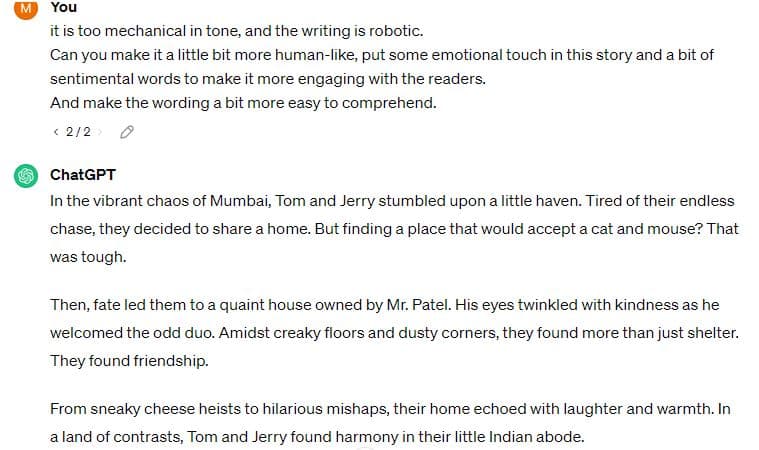
It may not be perfect, but saying that these words lack the element of emotional connection is preposterous.
Read More: Will ChatGPT Replace Content Writers?
4. AI Writing Style
Some people came to the conclusion that it is the writing style and tone of AI that makes it distinguishable from human writing.
Wrong once again.
It is true that large language models are not yet fully capable of mimicking or emulating different writing styles and tones with 100% accuracy. But they certainly do not have just a single writing style and tone.
Depending on the given prompt, ChatGPT can easily mimic many writing styles including;
- Academic/Formal
- Creative/Literary
- Technical/Scientific
- Persuasive/Argumentative
- Humorous
- Journalistic/News Reporting
- Conversational
- Descriptive
- Expository/Exploratory
- Instructional/Guidance
The outcome may not be fully up to your expectations. But considering the fact that AI technology is growing at an unprecedented rate, it is not too far from AI emulating any writing style with the maximum efficiency possible.
There are many other misconceptions available on the internet about the difference between AI writing and human writing, but they are not so significant to discuss them all here.
So, let’s move on to our prime concern.
The Actual Difference Between Human Writing And AI Writing
The key difference between AI written content and human written content is Writing Accuracy.
Surprised?
Let us present our argument.
But before that, you have to get some basics clear. You need to understand 3 major topics before we discuss this finding in detail.
Topic 1 – Difference between Grammatical Correctness and Grammatical Accuracy
First of all, let’s get some basics about grammatical correctness and grammatical accuracy clear. This would help you understand our late argument.
Grammatical Correctness
Grammatical correctness means using words and sentences in a way that follows the rules of grammar. When something is grammatically correct, it means it’s structured properly and makes sense according to the language’s rules.
For example, using the right verb tense or putting words in the right order makes a sentence grammatically correct.
Grammatical Accuracy
Grammatical accuracy is all about how accurately someone uses grammar in their language. It’s not just about following the rules, but also using them correctly in every situation.
When someone has good grammatical accuracy, they use the right words and sentence structures without making mistakes.
It’s like hitting the bullseye every time you use grammar correctly.
Examples
Let’s look at some examples so you can understand the difference more clearly.
- “I have been to Paris two times.” This sentence is grammatically correct as it follows the structure of the English language. However, a more accurate version would be: “I have been to Paris twice.” The use of “two times” is grammatically correct but less precise compared to “twice.”
- “She’s older than him.” This sentence is grammatically correct, but it could be more accurate. A more accurate version would be: “She’s older than he is.” Here, “he is” maintains grammatical accuracy by completing the comparison.
- “He did good on the exam.” This sentence is grammatically correct, but it is less accurate. A more accurate version would be: “He did well on the exam.” Here, “well” is more precise in describing the performance on the exam.
We hope you got our point on the distinction between these 2.
Now, let’s move on to understanding another important topic.
Topic 2 – How Does AI Models, like ChatGPT, Work?
Let’s break down how AI models like ChatGPT process information in simple terms:
- Input Processing: When you provide input to ChatGPT, such as a question or a prompt, it first needs to understand what you’re saying. This process starts with tokenization, where the input text is divided into smaller units called tokens, such as words or subwords. These tokens are then converted into numerical representations.
- Numerical Representation: Each token is mapped to a unique numerical value using techniques like word embeddings. This step essentially converts words or tokens into vectors of numbers. These numerical representations capture semantic meaning and relationships between words.
- Model Architecture: The numerical representations of the input tokens are then fed into the AI model’s architecture. ChatGPT, for example, uses a deep neural network composed of multiple layers of interconnected nodes. These layers process the input data in various ways, extracting patterns and relationships.
- Learning and Training: Before a model like ChatGPT can understand and generate responses, it needs to be trained on vast amounts of text data. During training, the model adjusts its internal parameters to minimize the difference between its predicted outputs and the correct outputs in the training data. This process involves complex mathematical optimization techniques.
- Generating Responses: Once the model is trained, it can generate responses based on the input it receives. It uses its learned knowledge to predict the most likely sequence of tokens that should follow the input. The output tokens are then converted back into human-readable text.
- Feedback Loop: ChatGPT, like many AI models, can improve over time through a feedback loop. When users interact with the model and provide feedback, such as correcting its responses or rating its accuracy, this information can be used to fine-tune the model’s parameters and improve its performance in future interactions.
Overall, AI models like ChatGPT process information by transforming text inputs into numerical representations, leveraging complex neural network architectures, and learning from vast amounts of training data to generate coherent and contextually appropriate responses.
So, as we know in the case of computers, there are binary operations happening in the background. In the case of AI, advanced mathematical operations are at play. AI models don’t comprehend our language like humans do; instead, they perceive advanced patterns and structures.
Now let’s move on to our 3rd and last topic before we can start the actual discussion.
Topic 3 – AI Detection Tools Don’t Exist
There is no such thing as “AI Detector”.
Yes, you heard right.
No tool can “Detect” if the content is written by an AI or human.
There is no watermark, DNA, thumbprint, or bar code in the written content. Just plain text, which AI doesn’t even understand (we discussed this in the previous topic 2).
So how do they work? You might ask.
The answer is that they compare, not detect, the provided content with their own generated content (which we don’t see and happens behind the scenes).
Just like how a human would see content and tell if he/she wrote it or not if they were to ask and had forgotten about the written topic.
“Yeah, it sounds like something I would write.”
Just like that, AI detectors like Copyleaks, GPTZero, or Originality AI, take the input text and wonder “If I were to write on this topic, would my outcome resemble this piece of content”. And they don’t answer simply YES or NO, but in probability (percentage or different shades of color red).
If you copy and paste exactly ChatGPT content into GPTZero, it might say 100% probability that the written content is an AI. If you change a little bit, then the probability drops significantly.
It is because you disturbed the natural flow and sequence of tokenization, embedding generation, contextual understanding, and ultimately model prediction within the AI backend.
A real-world example would be this.
The Content = “The Matrix is real, pray you never become its target . The Matrix is a reminder that we’re all living in a simulation. The Matrix is trying to control you”.
Present this piece of content to Jordan Peterson and ask, “Is it yours?”
Jordan Peterson will observe, think, compare, and will surely reply, “No it’s not mine”. It is non-Peterson (Non-AI). That’s how AI detectors simply work.
And we all know whose words these are. 😜
So all these AI detection tools are actually just comparing tools.
The Argument
Now that you have the basics of how AI models work, the difference between grammatical correctness & grammatical accuracy, and the truth about AI-detection tools. Let’s move on to our prime discussion.
Did you notice that we explained “Grammatical Accuracy” in our first topic, but in our bold statement, we used the word “Writing Accuracy”. That’s because AI writing may or may not be accurate according to the grammar, but they sure are accurate according to their training data.
Confused?
Let’s consider an imaginary AI chatbot that is being trained on a dataset written only in American English. And you give it some content written in British English (which is grammatically correct and accurate from the British English perspective), and ask “Is it grammatically accurate? ”.
The outcome would definitely NOT be 100% accurate.
The AI-detection tool, which is also trained on US-English would say that the content is 60 or 70 or maybe 80 percent AI-written, but it never will be 100%. Because we all know that the accuracy parameters in British English and American English are different.
So a piece of content written by ChatGPT could be considered inaccurate from Gemini’s perspective and vice versa.
Here is the proof.

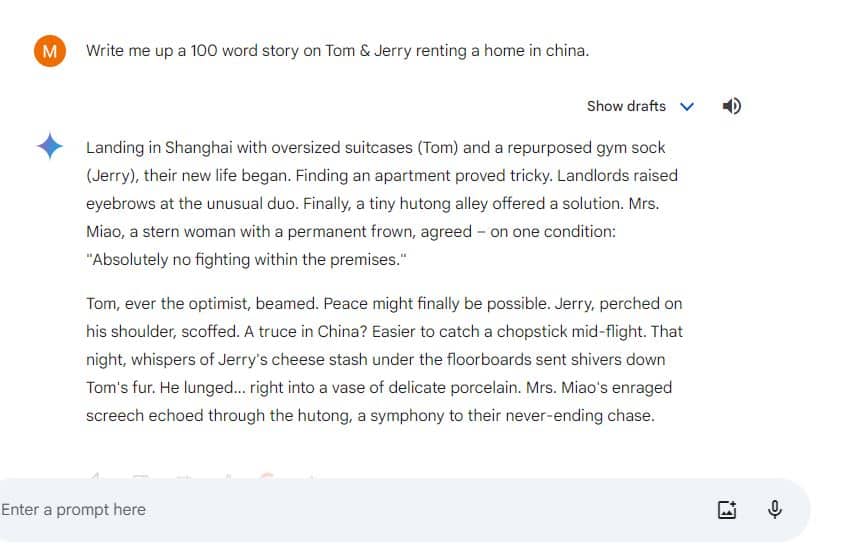
I gave them both the same command and got an imaginary story of Tom & Jerry renting a home in China.
Here is the fun part.
Copyleaks considered ChatGPT written content to be AI content, but Gemini’s content is in the safe zone.
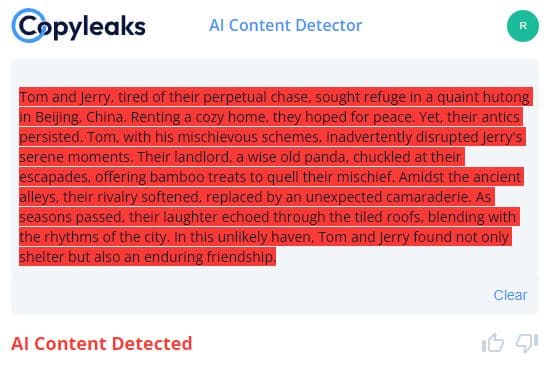
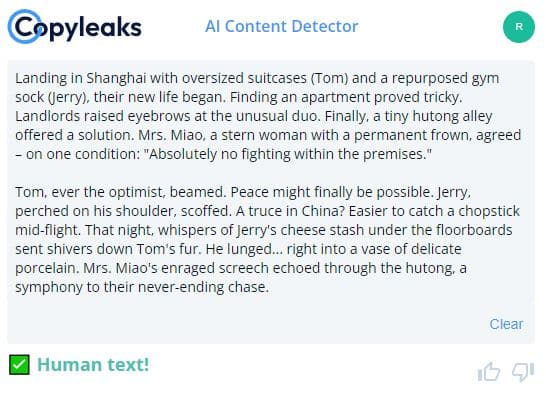
And not just Copyleaks, GPTZero also showed the same result.
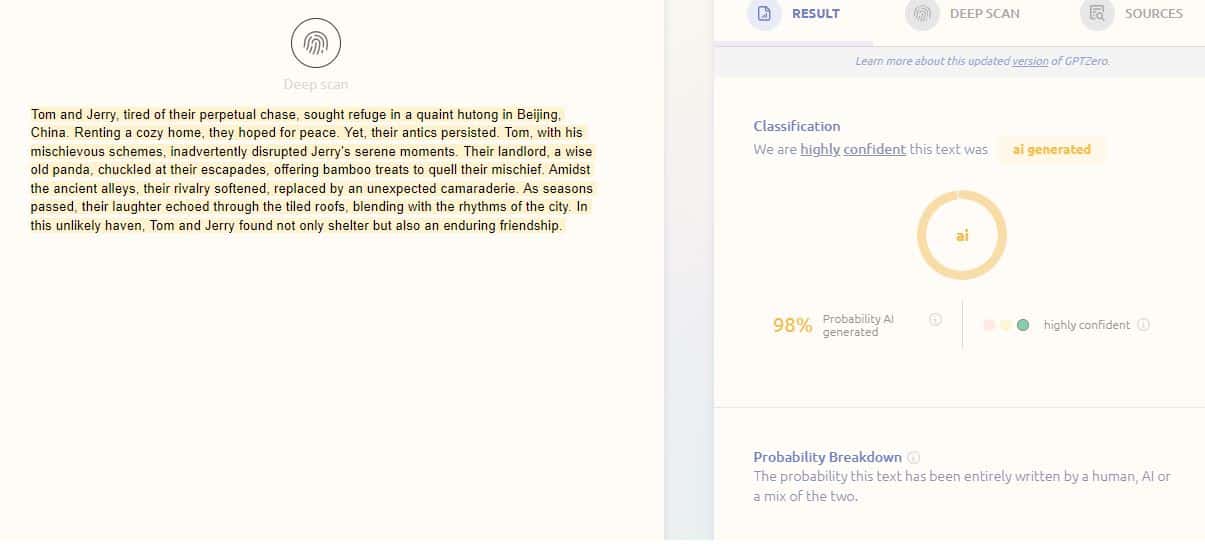
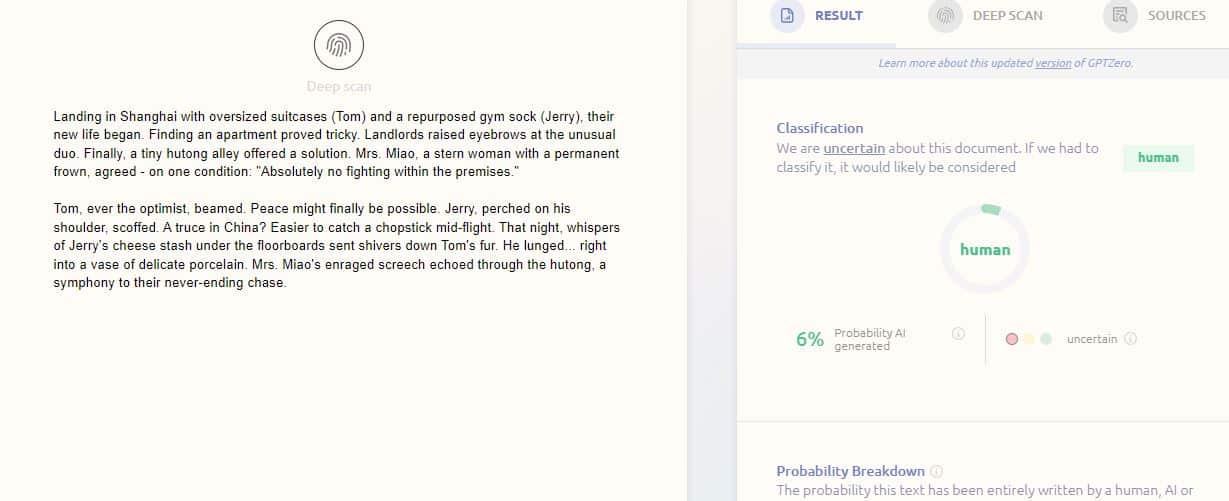
Why do you think that is the case?
Our guess is that both of them are trained on the GPT language model but do not contain and understand the working pattern/sequence of the Gemini language model. They can’t compare Gemini’s content if they don’t have any content to compare it with.
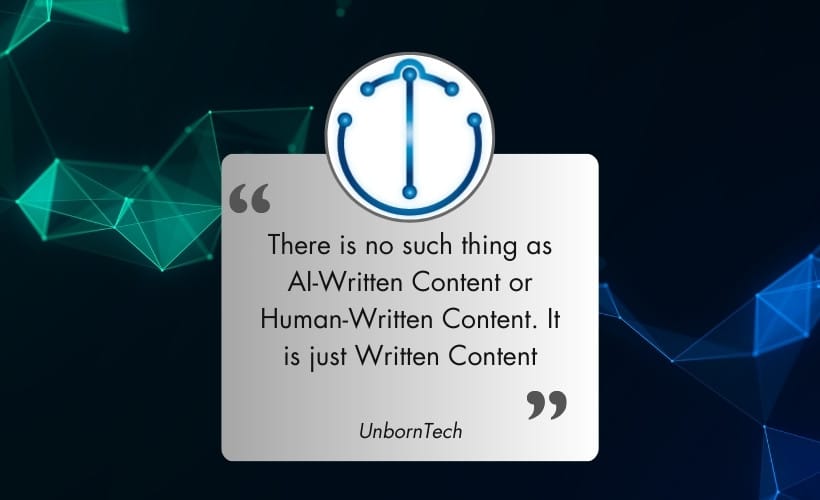
So, if your writing pattern/sequence matches with ChatGPT’s writing pattern/sequence, then bam. Your content will be considered AI content by these so-called AI detectors even if you have written it completely by yourself.
Many people have complained about this issue on Reddit, Quora, and many other platforms.


What this actually means is that your written content is ACCURATE from ChatGPT’s accuracy point of view. Even though both (yours and ChatGPT’s) might not be 100% accurate from Gemini’s, LaMDA’s, or even the English Language’s point of view.
So, there you have it folks. The actual difference between human writing and AI writing is simply a matter of Writing Accuracy.
Note: This is just a calculated speculation, and it is possible that the AI detector or comparison tool you are using might be trained on more than one Large Language Model and will be able to detect all sorts of AI-generated text, whether it is produced by GPT, LaMDA, BERT, Gemini, or any other. We also hope that soon, GPTZero and Copyleaks will be upgraded to detect Gemini’s content as well.
Challenge to Readers
If you still have any doubts about our findings. Then write about something that cannot possibly exist on the internet or anywhere else. Something that only you would know about.
Remove its grammatical mistakes by using Grammarly or any other AI tool to make sure your piece of content is grammatically correct.
Now analyze the written content on any of the popular AI detectors like Copyleaks or GPTZero. The outcome would most likely be “Human-Generated”.
Then go to ChatGPT, input the content, and ask ChatGPT to “Rewrite it in a better way”, “Paraphrase it”, or “Make this content better”.
Now copy the outcome and check it again on the AI detector.
The outcome would definitely be “AI-Written”.
Do let us know your findings in the comment section below, and also if you have any doubts.
Conclusion
As we move forward into the world of artificial intelligence, the distinguishing line between AI and Human-written content is fading away. The way we used to write content and gather information is changing drastically.
But never forget that a tool is only as much capable as the user. Machines are still machines, regardless of how capable they are. They lack intent behind their actions. That’s where humans take charge and utilize these advanced tools to accomplish their objectives with more precision, efficiency, and productivity.
Even if ChatGPT, Gemini, or any other tool can generate good content, they still need the right prompts to come up with valuable content. Hence, the right approach here is to adapt this new technology, learn to use it effectively, and improve your work productivity & efficiency.
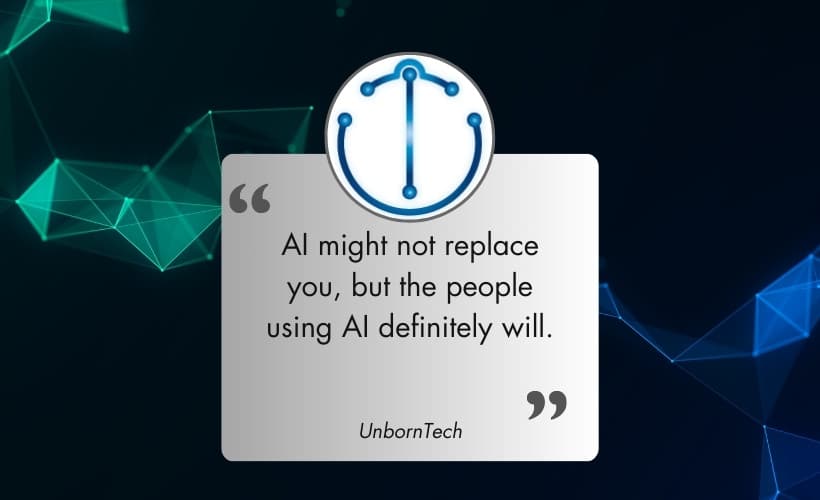
Frequently Asked Questions (FAQs)
Can AI replace human writers?
No, AI will not replace human writers but augment their capabilities. However, it may lead to a shrinking of the content writing market, as discussed in our article.
What is the actual difference between human writing and AI writing?
The primary distinction lies in Writing Accuracy, which refers to how closely a piece of writing aligns with the patterns and structures learned by the AI during training.
How do AI-plagiarism detection tools differentiate between human and AI-written content?
These tools compare the provided content with their own generated data to determine the likelihood of it being AI-generated, based on patterns and similarities.
Do AI models lack creativity and originality?
No, advanced AI models like ChatGPT can be highly creative and generate original content based on user prompts.
Does AI-written content lack emotion?
While AI-generated content may not fully replicate human emotion, it can still convey sentiment to a certain extent depending on the input and context.
Can AI mimic different writing styles and tones?
Yes, AI models like ChatGPT can mimic various writing styles, including academic, creative, technical, persuasive, and more, although with varying degrees of accuracy.
Is there such a thing as an AI detector?
No, AI detectors like Copyleaks or GPTZero compare provided content with their own generated data to assess the likelihood of it being AI-generated.
Why might an AI detector label human-written content as AI-generated?
If the writing style and patterns of the human-written content resemble those of an AI model like ChatGPT, it may be flagged as AI-generated by the detector.

